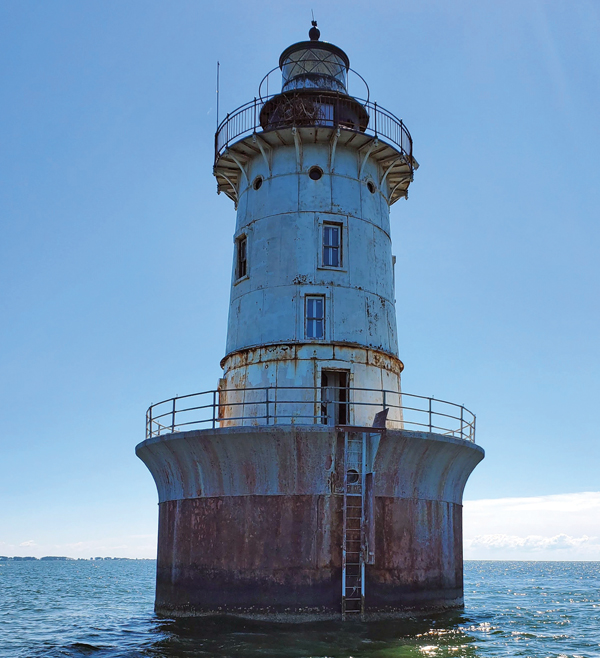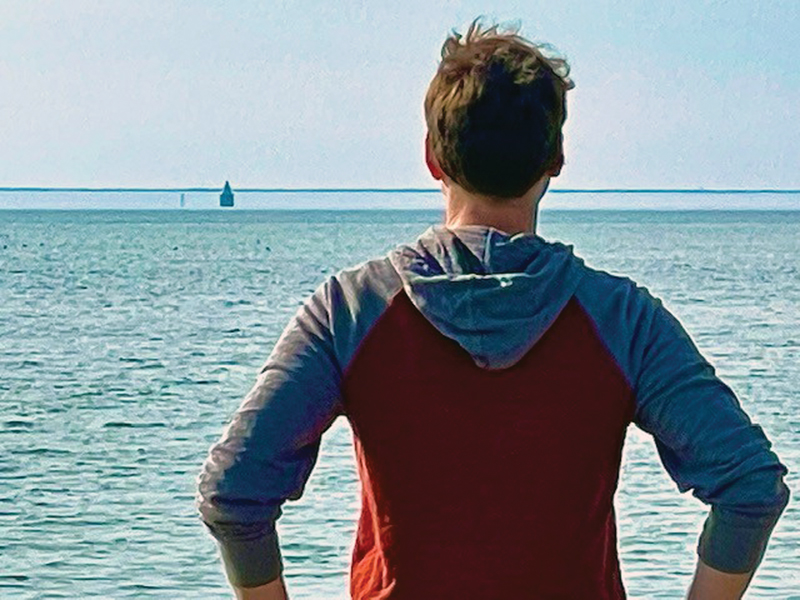The dream: Hooper Island Lighthouse repurposed into an environmental center

Why a lighthouse?
I’ve been attracted to restoring historic properties most of my life, and there’s not much more historic than a 120-year-old lighthouse in the middle of the Chesapeake Bay. Some folks think I’m crazy to take on such a project, suggesting that I’ve romanticized the idea a little too much.
What line of work has prepared you for this?
My whole life I’ve been in the industry painting business working with all kinds of metal structures. I have also restored and rebuilt old houses. Hooper Island Lighthouse is basically a tall iron house, so I think it is a perfect project for me to take on.
Why is the lighthouse in disrepair?
In 1902, when it was completed, lighthouses were a necessity for safe navigation on the water. Manpower was needed around the clock to light the lamp with oil and keep watch for ice, fog, and other vessels. Much of its function was automated over time, and modern navigation tools have emerged. Lighthouses that remained were often restored by surrounding communities. Others, like the Hooper Island Lighthouse, in the water and hard to reach, were left to rust.

What’s first on the punch list?
The first is an inspection to determine what will be needed. We’ll also build a dock for easier access from the water and to serve as an area for loading equipment and materials.
What do you expect to be the easiest part?
Restoring the exterior will be the easiest part for me. I have done that kind of work all my life, so I have the knowledge, equipment, and experience to do it, even though it is a large job.
What do you think will be the hardest part?
I think just getting out there and back and on and off the lighthouse during rough weather will be the hardest. I am a naturally optimistic person, so I am trying to expect the worst; but also, in many ways, I don’t know what to expect!
Any idea how long the restoration will take?
I am hoping by 2024 we can allow access to the general public for tours and special events. A lot depends on how much help I can get and the final cost of all the different phases of restoration.
Give us an idea of its size.
It would take about 100 adults standing shoulder-to-shoulder to make it around the first railing. From the waterline to the light is about 65 feet. The rooms are small, but remember, it was inhabitable in the early part of last century.
Is your plan for it to be functional or purely a restored piece of history?
It is my dream to repurpose the lighthouse into an environmental center where people can come and learn about the Bay and the creatures that live in it. That’s why we came up with the mission: “Restore the lighthouse, Restore the Bay.”
Sounds like a project with a purpose, yes?
Most definitely. I have always been environmentally conscious. There is no better indicator of the state of our environment than our bodies of water. When I first visited Hoopers Island, I immediately fell in love with the area and wanted to do my part to save its beauty and history. Being from Pennsylvania, I spent time on the Susquehanna River, a major tributary to the Bay. I want to be part of the great work others are doing to help improve the health of the Bay.
How do folks follow the restoration?
Videos of the restoration will be posted on social media: Facebook @Hoopers Island Lighthouse; Instagram @hooper_island_lighthouse, and the Hooper Island Lighthouse YouTube channel. Find more information at hooperislandlighthouse.org.
Interview by Gwen Mayes
About the Interviewer: Gwen Mayes is a writer, life coache, workshop host, and docent for the Annapolis Maritime Museum and Park. Find her at anchortoself.com.




